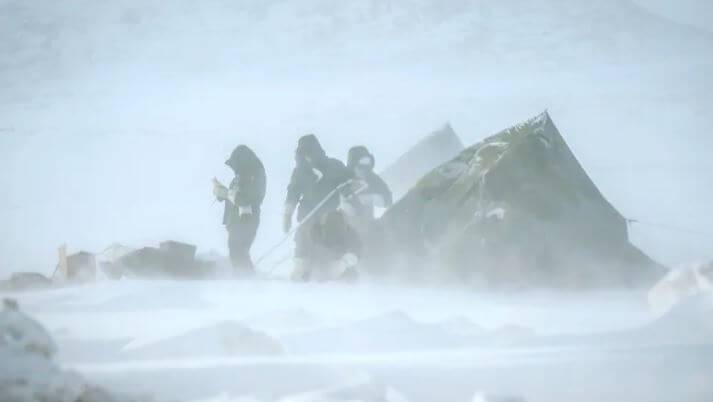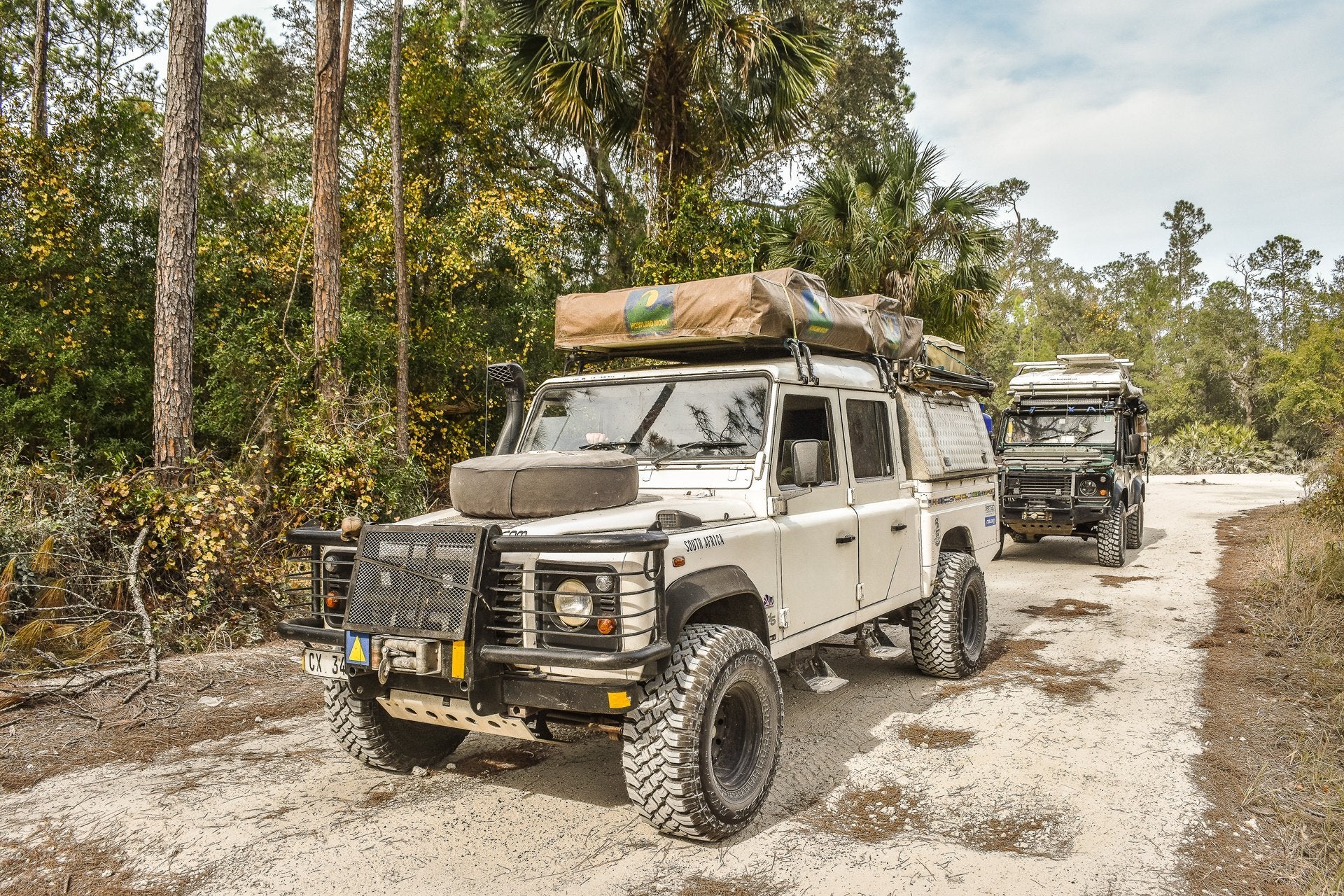The Best Roof Top Tents (2019 Reviews)
by Kieran CunninghamNovember 27, 2019
First popularized in Africa and Australia back in the 1950s, in the last decade or so roof top tents have become the go-to choice for thousands of campers worldwide—and with good reason. For backcountry enthusiasts looking for a little more in the way of comfort, convenience, and luxury than that offered by traditional ground tents, there’s simply no better way to do it. The increase in RTT camping’s popularity has seen a concomitant rise in the number of RTTs on the market and in this article we aim to introduce you to the 25 top performers out there for 2019.
We reviewed dozens of roof tents to identify the best of the best. We examined a range of factors, including material, capacity, weather resistance, convenience, shape, cost, and average customer reviews.
Having considered a large number of rooftop tents, we chose the Smittybilt Overlander Tent as our top pick. This tent ticks all the boxes, using extremely rugged, waterproof, 600D fabric in combination with anodized aluminum frame poles and packing a wealth of handy features, including a sunroof, mosquito net, interior LED strips, an integrated, high-density foam mattress, and four sunshade awnings. It’s also easy to set up and can accommodate up to 3 people.
The 5 Top-Rated Roof Top Tents
| Editor's Picks | Brand | Rating |
|---|---|---|
| Best Overall | Smittybilt Overlander Tent | 4.4 |
| Runner Up | Tuff Stuff Ranger Overland Rooftop Tent with Annex Room | 4.9 |
| Best Budget Buy | Guide Gear Full Size Truck Tent | 4.3 |
| Best Jeep Roof Top Tent | Tepui Kukenam Sky Tent | 5.0 |
| Best Truck Roof Top Tent | Kodiak Canvas Truck Bed Tent |
4.5 |
*Ratings are from Amazon at the time of publication and can change
Our Top Pick: Smittybilt Overlander Tent
Having considered a vast array of options, the roof top tent that wins our vote as best model currently on the market is the Smittybilt Overlander Tent. This tent is an excellent choice for all three-season camping adventures, offering robust and durable materials, simple setup, outstanding weather protection, and enough room to accommodate two adults and a child with square footage to spare. As an added bonus, the price tag on the Overlander is far friendlier than those you’ll find on most of its three-person, three-season competitors, too.
Straight from the box, this tent oozes quality. With 600D body fabric, a PVC-coated rainfly, and a robust, anodized aluminum frame, the materials used in its construction inspire confidence and represent a significant upgrade on many budget models of roof top tent and almost all varieties of traditional ground tent.
In addition to its solid waterproofing, sturdiness, and durability, the Overland also packs a full complement of convenient and comfort-enhancing features, including three windows with mosquito netting, interior LED strips, two skylights for stargazing, an extra-wide ladder, and a plush, high-density foam mattress.
Smittybilt Overlander Tent Key Features:
- 300kg load capacity
- 600D ripstop and waterproof polyester fabric
- 420D waterproof Oxford flysheet
- Sleeps 3
- High-density foam mattress
- 1-year warranty
Our Runner Up Pick: Tuff Stuff Ranger Overland Rooftop Tent (With Annex)
For those looking for a roof top tent that offers just a little bit more in the way of elbow room, the Tuff Stuff Ranger Overland Rooftop Tent deserves its place somewhere very near the top of your shortlist.
With enough room to accommodate a family of five or two adults plus a dining table and chairs in the 90″ x 90″ annex, the TuffStuff Ranger takes livability to a whole new level. If you happen to be the type of camper who fears the possibility a dose of “cabin fever” when spending more than a few nights out in the backcountry, or are just keen on having a little extra space for gear and sundries, then this two-level tent has you covered.
While this tent’s unique selling point might be its almost peerless roominess, however, it has a lot more going for it than oodles of space alone. First up, the Ranger uses 280g poly-cotton ripstop fabric with a waterproof polyurethane coating in the tent body and a burly, PU-coated, 420D polyester rainfly, thereby providing maximum protection against the elements and also outstanding ruggedness and durability.
The Ranger also comes with a 1000D PVC driving cover, a plush, 2.75″, high-density foam mattress (measuring 56″ x 96″), an aluminum ladder, and can be set up in just a few minutes.
Tuff Stuff Ranger Overland Rooftop Tent Key Features:
- Total combined interior space of nearly 100 square feet
- Tent plus 90″ x 90″ annex
- Waterproof
- 420D, PU-coated rainfly
- High-density foam mattress
Best Budget Pick: Guide Gear Full Size Truck Tent
If simplicity and value for money rank high on your list of priorities, the Guide Gear Full Size Truck Tent could well be the tent for you. This very affordably priced truck-bed tent lacks some of the bells and whistles featured on pricier models but does everything you need a tent to do without any notable omissions or flaws in terms of features or overall performance.
This tent’s footprint measures 63″ x 79″, making it a good fit for most full-sized truck beds, and its 5.25′ peak height gives it a roomier feel than many of its competitors in the truck-bed tent market. The tent body is made with 190T polyester with a 1,500 mm water-resistant coating and its defenses against the elements are further bolstered by a lightweight but highly effective rainfly. The tent inner also boasts a duo of mesh windows to aid ventilation, a pair of handy storage pockets, and a large D-shaped door that makes entering and exiting the tent hassle-free.
All in all, this tent takes no more than five minutes to set up and its four-pole, fully-enclosed design and tension strap anchoring system means that once its up, you know it will take a storm of utterly biblical portions to bring it down!
Guide Gear Full Size Truck Tent Key Features:
- Fully enclosed design
- Waterproof
- 5.25′ peak height
- Easy to set up
Best Jeep Tent: Tepui Kukenam Sky Tent
Few roof top tents are quite so well equipped to deal with the very worst the elements can throw at us as the Tepui Kukenam Sky Tent.
This may not be the cheapest roof top tent out there, granted, but in return for the additional outlay you get an awful lot in return in terms of not only weather protection, but also space, quality of build, convenience, features, and durability.
The Kukenam Sky Tent uses a spacious, A-frame style design with a generous peak height of 52″, meaning you have plenty of room to sit up and enjoy the views through the large, mesh-covered screen windows on all four sides. The tent also offers excellent durability and weather protection thanks to the 600D ripstop poly-cotton canopy fabric and 420D, PU-coated polyester rainfly.
Some features that make the Sky Tent a standout among its peers in the RTT market include waterproof YKK zippers, a 8’6″ telescopic ladder, a duo of sky-viewing panels in the roof, four large interior storage pockets, and a quick-release clip system on the rainfly that lets you whip it off in a matter of seconds when the sun comes out.
Tepui Kukenam Sky Tent Key Features:
- 600D ripstop canopy fabric
- Waterproof canopy, rainfly, and zippers
- Quick-release rainfly clip system
- Mosquito mesh on windows
- 8’6″ telescopic ladder
Best Truck Tent: Kodiak Canvas Truck Bed Tent
For truck owners looking to turn their truck bed into an all-weather, superbly spacious backcountry sanctuary, they don’t come much better than the Kodiak Canvas Truck Bed Tent.
This tent uses a very robust, three-quarter-inch steel tube frame that connects to clamp-on rails that attach to the sides of your truck bed. This feature provides a more secure fit and far more stability than truck-bed tents that use a strap attachment system. The frame’s tunnel-style design also makes the Kodiak superbly spacious, with a peak height of 5 feet and walls that curve outward as opposed to inward, thereby maximizing livability and headroom.
The Kodiak also scores highly in several other metrics, most notably the quality of the materials used in its construction. The tent is made with 100% cotton duck canvas with a Hydra-Shield finish that provides outstanding water resistance without sacrificing breathability, thereby making it far better equipped to deal with varying weather conditions than many cheaper truck- bed tents that use lighter polyester materials.
This tent also boasts a handful of very useful features, including a covered entry that keeps your tent’s interior dry when entering and exiting in the rain, two large gear pockets, a total of five mesh windows, and a large D-shaped door.
Kodiak Canvas Truck Bed Tent Key Features:
- 5-foot ceiling/peak height
- Tunnel-style design
- Waterproof Hydra-Shield finish
- Heavy-duty canvas fabric
Who Should Buy a Roof Top Tent
Roof top tents have a number of benefits that make them a more appealing option than traditional ground tents to many campers. The most important of these all relate to those factors in which we are apt to gauge any tent’s desirability, namely comfort, convenience, and protection from the elements.
The most obvious difference between a traditional tent and a roof top tent is that with an RTT you are elevated off the ground. This configuration is advantageous for a number of reasons, but most notably because you don’t have to search for a flat, lump-free spot to pitch your tent, you’re up above insects and animals and reptiles that may be roaming your campsite, and “pitch time” is significantly reduced owing to the fact that your tent is already attached to what will be its foundation for the night(s) ahead.
Also, because roof top tents are not designed to be carried, the materials used in their construction are, generally speaking, far more robust and weather-resistant than standard ground tents. In terms of comfort and convenience, RTTs typically score far higher marks than traditional tents, too, with most models using a chunky integrated mattress and setting up in only a few minutes without the need to first seek out or hike to a suitable pitch point.
All of the above means that RTTs are a good choice for any would-be backcountry adventurers who are not too keen on the drawbacks inherent to camping in a traditional ground tent (lumpy sleeping spots, bugs, lengthy pitching process) and prefer a sleeping setup that provides a substantial upgrade in terms of weather protection and overall comfort.
If you’ll be trekking out and about on your trip, be sure to check out our review of the best waterproof backpacks to keep your gear dry.
Important Features to Consider
A roof top tent should do several things well. Here’s what to consider when selecting a roof top tent for your adventures in the outdoors:
dynamic weight capacity will determine whether or not your vehicle and your roof rack will be able to support the weight of the tent alone while driving, whereas the static weight capacity will tell you if they are capable of supporting the weight of the tent plus its occupants when parked.
Frequently Asked Questions
What is a roof top tent and how does it work?
Roof top tents are shelters that can be attached to the roof rack of your vehicle to provide an elevated outdoor living space. Two main categories of roof top tent exist—soft shell tents and hardshell tents. Both types are attached to your vehicle’s roof rack during transportation and either flip open or pop open when parked. A third sub-type of roof top tents exists in truck tents, which are designed to be attached to the bed of trucks with straps and use the bed itself as a foundation.
How much does a roof top tent weigh?
Most models of roof top tent weigh in excess of 100 pounds. This is important for two reasons: compatibility and initial installation. Anyone interested in buying a roof top tent should first check that the roof rack on their vehicle will be capable of supporting the weight of the tent while driving (dynamic load capacity) and when stationary (static load capacity). Both the dynamic and static load capacity of your roof rack can usually be found in the owner’s manual.
Because of the weight of RTTs, buyers should also be aware that initial installation can sometimes be a lengthy and laborious process and often require a few pairs of helping hands.
Do you need roof racks for a roof top tent?
Yes. Almost all types of roof rack are compatible with roof top tents provided they have a dynamic weight capacity (DWC) that is equal to or greater than the weight of the tent. Varying systems are used to attach different tents to different types of roof rack, but most RTTs use bolts and mounting plates, meaning that square bars are easier to work with than the oval-shaped whisp bars, which can be too wide for the plates supplied with the tent.
How do you clean a roof top tent?
The best way to clean your roof top tent is to use a mild detergent with warm water and a sponge and then rinse the off the detergent with a clean sponge.
If you happen to find mold or mildew on your tent, first wash the affected area with a mild detergent as described above. Then, mix one cup of lemon juice and one cup of salt into a bucket of warm water and rinse off the affected areas. Leave the tent to air dry in the sun.



